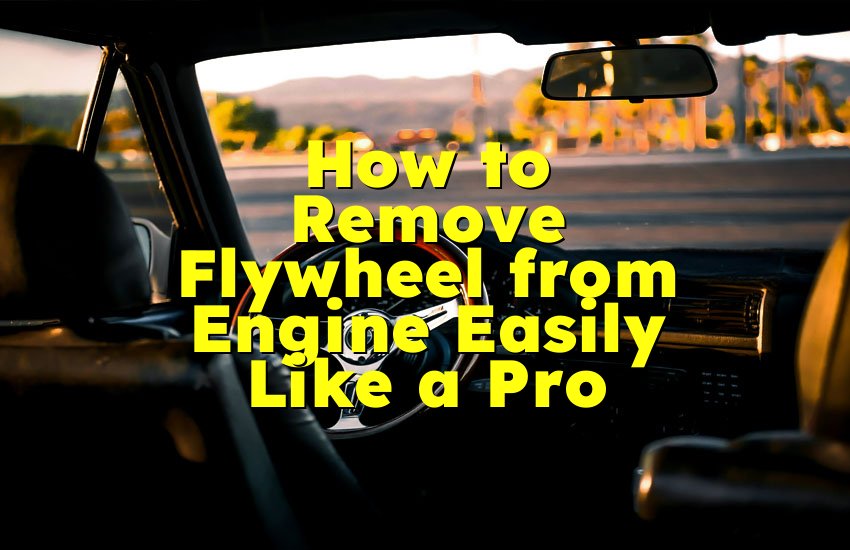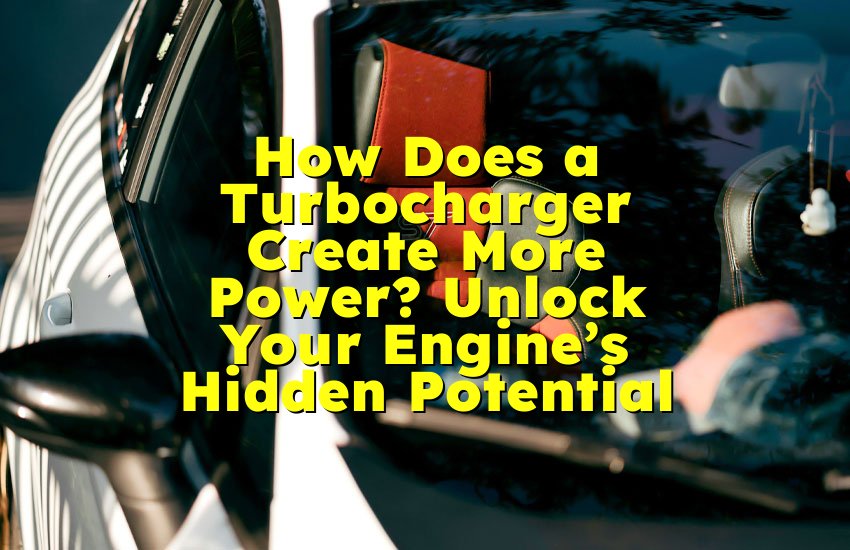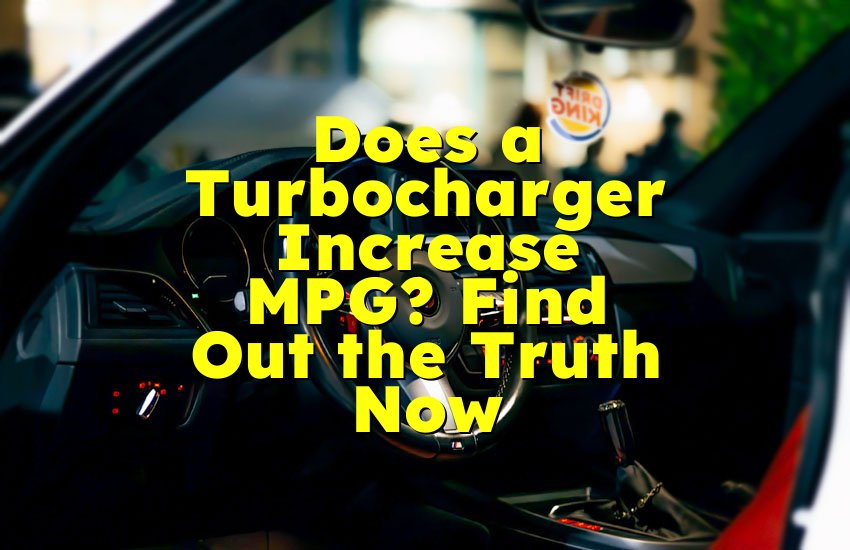As an Amazon Associate, I earn from qualifying purchases at no extra cost to you.
Can You Have a Turbocharger and a Supercharger? Here’s the Truth
Ever wondered if you can get the best of both worlds in your car? Imagine hitting the gas and feeling an instant rush, then a steady push that never quits. Sounds wild, right? Well, some car fans dream about having both a turbocharger and a supercharger. But is it possible, or just a crazy idea? Let's dive into it and see what's really going on.
Combining Turbocharger and Supercharger: Is It Possible?
Understanding Turbochargers First
A turbocharger is a device that uses exhaust gases to spin a turbine. This turbine pushes more air into the engine. More air means more fuel can burn. This creates more power. Turbochargers are common in many cars today because they are efficient and can make small engines feel strong.
Turbochargers do take a moment to "wake up." This delay is called turbo lag. When you press the accelerator, it sometimes takes a few seconds for the turbo to boost. Still, modern turbos are very fast, and many reduce lag with clever designs.
These devices are compact. They fit under the hood without taking too much space. However, they do make the engine hotter. That's why cars with turbos often need stronger cooling systems.
In short, turbos are powerful and efficient. They can make your engine feel like it's much bigger than it is. Many enthusiasts love them because they are smooth and give strong acceleration.
- Uses exhaust gases to spin a turbine
- Increases engine power efficiently
- Can cause turbo lag
- Needs extra cooling
Superchargers Explained
A supercharger works differently. It is connected directly to the engine via a belt. When the engine spins, the supercharger spins too. This forces more air into the engine instantly. There is no lag. You get immediate power.
Superchargers are great for cars that need quick response. Racers often like them for this reason. But, they take power from the engine to run. That means some energy is used to spin the supercharger itself.
Superchargers come in different types, like roots, twin-screw, and centrifugal. Each type has pros and cons. Roots and twin-screw give strong low-end power. Centrifugal works better at high speeds. Choosing the right type matters for the car's feel.
Overall, superchargers give fast response and steady power. They are loud, fun, and make driving exciting. However, they are less fuel-efficient than turbos because they use engine power.
- Directly engine-driven, no lag
- Gives immediate acceleration
- Uses some engine power
- Different types for different needs
Can You Combine Them?
Yes, you can combine a turbocharger and a supercharger. This setup is called a twin-charging system. The supercharger works at low speeds. It gives instant boost. The turbo takes over at higher speeds when exhaust gases are strong enough.
This combination solves many problems. Turbo lag disappears because the supercharger covers low RPM. At the same time, the turbo can provide high-end power without extra engine strain. Some performance cars and racing setups use this approach.
The system is complex. Installing it is not cheap. You need careful tuning to avoid engine damage. Cooling is also very important because both devices create heat. But for those seeking ultimate power and responsiveness, it can be worth it.
- Twin-charging uses both devices
- Supercharger covers low RPM
- Turbo covers high RPM
- Requires careful installation and tuning
Benefits of Using Both
The main benefit is smooth power across the whole range. You never feel weak spots. Acceleration is strong from start to finish. Cars feel fast and responsive in all situations.
Another advantage is efficiency. While a supercharger alone can waste some energy, adding a turbo helps recover power from exhaust gases. This balance can improve overall performance if tuned correctly.
Sound and feel are different too. The engine has a unique roar, blending the supercharger's whine with the turbo's whoosh. Many enthusiasts enjoy this signature sound. It makes the car feel more alive.
Maintenance is higher, but the experience is unmatched. You must check belts, hoses, and turbo connections regularly. Still, the thrill and performance often outweigh the extra care.
- Smooth power delivery
- Strong acceleration at all speeds
- Balanced performance efficiency
- Unique engine sound
Challenges and Considerations
Combining a turbo and supercharger is not simple. Costs are high, both for parts and installation. Not every car can handle it. Engine strength and space under the hood are major factors.
Cooling is critical. Both devices generate heat. Without proper cooling, the engine can overheat or fail. Extra radiators or intercoolers are often needed.
Tuning is another challenge. You must adjust fuel, timing, and boost levels carefully. Wrong tuning can damage the engine or reduce performance. Experts recommend professional installation for twin-charging systems.
Fuel consumption can increase. More air and fuel mean more energy used. Some drivers accept this as part of the thrill. Others may find it impractical for daily driving.
- High cost and complex installation
- Extra cooling needed
- Requires careful tuning
- Increased fuel consumption
Real-World Applications
Some famous cars use both devices. For example, certain Volkswagen and Audi engines have had twin-charging. These setups gave small engines surprising power without huge displacement.
Racing cars also use combined systems. The instant response from superchargers helps at the start, while turbos maintain speed on long straights. It's a perfect balance for competitive performance.
Even aftermarket kits exist for some enthusiasts. However, professional help is strongly recommended. A DIY attempt can lead to expensive mistakes or engine damage.
Insurance and reliability are other factors. Cars with both devices may be more expensive to insure. Repairs can be more frequent if the system is stressed. But for hobbyists and racers, these issues are often secondary to fun and performance.
- Some production cars use twin-charging
- Common in racing for balanced performance
- Aftermarket kits exist but need expertise
- Higher insurance and maintenance costs
Future of Twin-Charging
Automakers continue experimenting with this setup. New engines aim to be smaller, more efficient, but still powerful. Twin-charging can achieve both goals.
Electric cars may change the landscape. Instant torque from electric motors reduces the need for superchargers. But in high-performance combustion engines, combining a turbo and supercharger remains a way to maximize speed and excitement.
Technology improvements also make twin-charging safer and more reliable. Materials, cooling systems, and electronic controls allow better tuning. Future sports cars may use these systems more often.
Hybrid systems could combine electric motors, turbochargers, and superchargers. This may sound extreme, but engineers are exploring every possibility to push performance.
- Twin-charging is part of future engine designs
- Can help smaller engines achieve high power
- Technology improves safety and reliability
- Potential integration with hybrid systems
Final Thoughts
Having a turbocharger and a supercharger together is possible. It gives strong, smooth power and instant acceleration. Costs and complexity are high, but the thrill is real. If done correctly, twin-charging can transform your car's performance. Enthusiasts love it because it combines the best of both worlds. The system is exciting, challenging, and highly rewarding for those who enjoy speed and power.
| Component | Function | Pros | Cons | Best Use |
|---|---|---|---|---|
| Turbocharger | Uses exhaust gases to boost air intake | Efficient, high-end power | Lag, heat generation | Long stretches, high speed |
| Supercharger | Belt-driven, instant boost | Immediate power, responsive | Uses engine power, less efficient | Quick starts, racing, low RPM |
| Twin-Charging | Combines turbo and supercharger | Smooth power, no lag, balanced | Expensive, complex, more fuel | High-performance enthusiasts |
| Cooling System | Manages heat from both devices | Prevents overheating | Requires extra space | Essential for reliability |
| Tuning | Adjusts fuel, timing, boost levels | Maximizes power safely | Needs professional expertise | Critical for installation |
Do turbo and supercharger work together?
Yes, they can work together. A supercharger helps at low speeds while the turbocharger takes over at high speeds. Together, they provide smooth, strong power. This combination solves turbo lag and keeps performance high. Proper tuning is key. Cooling and maintenance are also very important. Without them, the system can fail or damage the engine. Professional help is recommended for safe operation.
Can a twin-charged car be reliable?
Reliability is possible but depends on installation and maintenance. Using strong engine parts, proper cooling, and professional tuning is critical. Regular checks of belts, hoses, and connections are necessary. With care, twin-charged cars can run daily. Neglect or poor installation increases risk of engine damage. Experienced mechanics often recommend only certain engines for twin-charging. With the right approach, reliability and performance can coexist.
Do twin-charged engines save fuel?
Fuel savings are tricky. Superchargers use engine power, which increases consumption. Turbochargers recover energy from exhaust gases, which can help. When combined, efficiency is better than a supercharger alone, but still less than a normal engine. Driving style also matters. Aggressive acceleration reduces fuel economy. Balanced driving and proper tuning can improve efficiency slightly. Ultimately, performance gains often outweigh fuel savings.
Can anyone install both devices?
Not really. Installation is complex and expensive. Engine space, strength, and cooling must be considered. Professional tuning is essential. Incorrect installation can cause serious engine damage. Some aftermarket kits exist, but they still require expertise. DIY attempts are risky. People without mechanical experience should leave twin-charging to professionals. Safety, performance, and reliability depend on proper setup.
Frequently Asked Questions (FAQs)
Is it safe to twin-charge an engine?
Yes, it can be safe if done correctly. Proper tuning, cooling, and strong engine components are essential. Professionals recommend careful installation to avoid damage. Regular maintenance helps keep the system reliable.
Can twin-charging improve small engines?
Absolutely. Small engines can get more power and torque. The combination helps them feel larger and more responsive. Many manufacturers use twin-charging for small turbo engines. It balances performance and efficiency.
Do twin-charged cars cost more to insure?
Yes, insurance may be higher. The complexity and performance increase risk for insurers. Specialized coverage may be needed. Owners should check with providers before installing both devices.
Is twin-charging loud?
Yes, it can be loud. Superchargers create a whine, while turbos make a whoosh. Together, the sound is unique and sporty. Many enthusiasts enjoy the roar as part of the experience.
Can I use twin-charging for daily driving?
Yes, but it requires care. Cooling and maintenance are important. Aggressive driving increases wear. With proper setup, daily use is possible.
Do twin-charged engines need more fuel?
Usually yes. More air and fuel are used to create power. Efficiency is better than supercharger alone, but still higher than normal engines. Driving style impacts fuel consumption.
Is tuning critical for twin-charging?
Absolutely. Boost levels, fuel, and timing must be carefully set. Incorrect tuning can cause damage or reduce performance. Professional help is highly recommended.
Can aftermarket kits work well?
Yes, with proper installation. Kits vary in quality and compatibility. Expert tuning is still necessary. DIY attempts can be risky and lead to engine problems.











